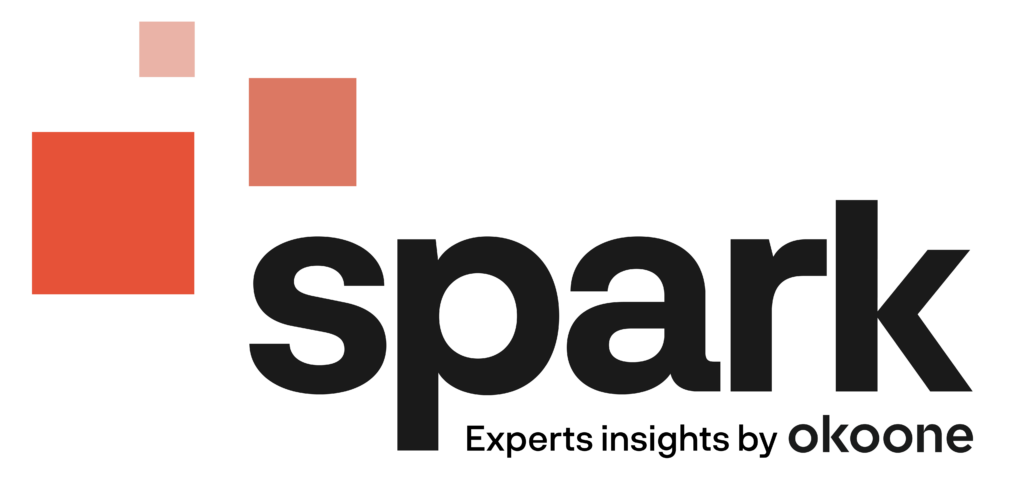Careful workload management in tech teams is foundational in preventing occupational burnout and employee overload. This challenge has intensified with recent layoffs and technical skills gaps, leaving remaining employees to shoulder increased responsibilities. Understanding the impacts and implementing strategies to mitigate them helps build and maintain a healthy, productive workforce.
The high cost of tech team burnout
Occupational burnout affects wide-reaching aspects of the workplace, leading to detrimental outcomes for employees and the organization. Recognizing these impacts, leadership can take proactive steps to address and prevent burnout.
Burnout kills job satisfaction
When employees feel overworked and undervalued, their motivation and enthusiasm for their work plummet.
According to recent data, 47% of technologists have been forced to take on tasks outside their job functions due to hiring pauses or freezes (2023 State of Upskilling report). This added burden without appropriate recognition or compensation erodes job satisfaction, leading to higher turnover rates and a loss of institutional knowledge.
Subtle damage to company culture
A healthy company culture fosters collaboration, innovation, and loyalty. When burnout sets in, these positive attributes deteriorate.
Employees overwhelmed by excessive workloads often disengage from their peers, leading to a breakdown in communication and teamwork.
This affects the overall morale of the team, creating a toxic work environment that hampers productivity and creativity. The company’s reputation as an employer of choice can suffer, making it harder to attract top talent in the future.
Health crisis in tech
Employees facing constant pressure without adequate support experience increased stress, anxiety, and depression. Physical symptoms such as chronic fatigue, headaches, and other stress-related conditions also become more common.
Addressing mental health is both a moral obligation and a business priority, as healthy employees are more productive and engaged. Promoting mental well-being through supportive policies and practices can lead to a more resilient and effective workforce.
Increased physical health issues among employees, such as appearing visibly tired, obviously stressed, or frequently sick, are clear indicators of overwork. Managers should be proactive in reallocating workloads and encouraging employees to take time off to recover and maintain their well-being.
Why your tech team is overworked and overloaded
Understanding the root causes of employee overload is foundational to developing effective solutions. Layoffs and technical skills gaps are primary contributors to the current crisis in the tech industry.
Surviving the fallout of tech layoffs
Layoffs have a direct impact on employee workload and morale. When companies reduce headcounts, the remaining employees must pick up the slack. According to the 2023 State of Upskilling report, 67% of tech managers have observed increased responsibilities for their teams following layoffs across software, IT, and data.
Surging workloads without corresponding support or resources leads to frustration and burnout. Employees feel overwhelmed by the expectation to maintain the same quality and quantity of work, often without the necessary tools or assistance.
Fewer heads, more stress
The 2023 State of Upskilling report highlights a worrying issue: 47% of technologists are taking on tasks outside their job function due to hiring pauses or freezes.
Shifting responsibilities stretches employees thin, impacting their efficiency and effectiveness.
With fewer team members, the collaborative spirit diminishes, and individual stress levels rise, leading to a decline in overall performance and morale.
Missing skills in security, cloud, and development
A shortage of skills in these areas places additional strain on existing staff, who must compensate by taking on unfamiliar tasks. This, in turn, raises the likelihood of burnout and affects both the quality and speed of project delivery. Investing in targeted training and development programs can help bridge these gaps and reduce the pressure on your tech teams.
The crushing weight of skill gaps
The 2024 Technical Skills Report indicates that 96% of technologists report increased workloads due to skills gaps, with 48% indicating a major increase.
This extra burden forces technologists to take on new responsibilities, use inefficient workarounds, and experiment with unfamiliar technology to keep daily business operations running. Such mismanaged practices lead to mistakes, rework, and further stress, creating a vicious cycle of overload and burnout.
Understanding these dynamics and implementing strategies to address them, companies can create a more sustainable work environment that supports employee well-being and drives long-term success. Investing in employee development, providing adequate resources, and fostering a supportive culture are key steps in mastering tech workload management and beating burnout.
Ripple effects of overworking your tech team
The cumulative impact of overworked employees on the organization includes deteriorating workplace culture, plummeting productivity, and reduced revenue. Understanding these outcomes highlights the importance of addressing overwork and burnout proactively.
Overworking takes a severe toll on employees’ physical, mental, and emotional health. Chronic stress from excessive workloads can lead to serious health problems such as hypertension, heart disease, and diabetes.
Mentally, prolonged stress contributes to anxiety, depression, and burnout, diminishing employees’ ability to focus and perform effectively.
Emotional exhaustion further reduces employees’ capacity to engage with their work and colleagues, leading to a decline in overall morale and job satisfaction.
Culture, productivity, and revenue hit hard
The negative effects of overworking employees ripple through the entire organization, greatly impacting workplace culture, productivity, and revenue.
- Abandoned projects: Due to skills gaps and overwork, 78% of organizations have reported abandoning projects midway, wasting valuable resources, demoralizing teams, and undermining confidence in the organization’s ability to complete initiatives.
- Maintenance woes: With 54% of companies worrying about maintaining legacy systems, the strain of overwork exacerbates this issue. Additional stress on the employees responsible for these systems increases the likelihood of errors and system failures, further disrupting operations.
- Lost opportunities: 44% of organizations fear they will miss out on business opportunities due to overworked and under-skilled teams. The inability to capitalize on new ventures can stifle growth and innovation, leaving companies lagging behind competitors.
- Client retention risks: About 33% of companies risk losing clients as a result of overworking their teams. Overburdened employees are more prone to mistakes and less capable of delivering high-quality service, leading to client dissatisfaction and potential loss of business.
Compounded by increased responsibilities, these issues create a challenging environment where the quality of work diminishes, and organizational goals become harder to achieve, starting the company down a perilous cycle of diminished service quality.
3 proactive strategies to prevent burnout
Preventing burnout in tech teams requires recognizing the signs of overworking and implementing strategies to support employees. Organizations must constantly strive to build up a healthier, more productive work environment. Managers must stay vigilant and responsive to the following indicators:
1. Dangers of never disconnecting
Employees who struggle to disconnect from work often respond to emails after hours and maintain constant activity on communication platforms like Slack. This indicates a lack of work-life balance, which leads to chronic stress and burnout.
Managers must encourage boundaries, such as limiting after-hours communication and promoting downtime to help employees recharge.
2. When passion turns to apathy
A noticeable decrease in enthusiasm for projects is a red flag. Employees who were once passionate about their work but now show disinterest or disengagement may be experiencing burnout. Regular check-ins to discuss their workload, interests, and goals can help managers address issues early and provide necessary support.
3. Power of weekly check-ins
Regular 1:1 meetings are an effective way for managers to stay connected with their team members’ mental health and workload. The focus of these meetings should be on more than task updates; they’re opportunities to discuss how employees are feeling, any concerns they have, and how the manager can support them.
Tech teams need competent and careful workload management
Effective workload management is key to maintaining a productive and engaged tech workforce. Clarifying business priorities and preventing scope creep helps organizations better make sure that projects align with strategic goals – and that employees are not overwhelmed by unnecessary tasks.
Prioritize aligning overarching goals with tasks
Aligning projects with overarching business, department, and team goals is fundamental to effective workload management. Each project should clearly contribute to the company’s strategic objectives so that efforts are focused on activities that drive business value.
- Business alignment: Start by identifying the company’s key strategic goals. These might include increasing market share, improving customer satisfaction, or driving innovation. Make sure that every project your team undertakes directly supports one or more of these objectives, which helps prioritize initiatives that matter most to the business.
- Departmental and team goals: Break down the company’s strategic goals into specific departmental and team objectives. For example, if the company’s goal is to boost customer satisfaction, the IT department might focus on improving system reliability, while the software development team could prioritize user-friendly features.
- Project value and urgency: Evaluate each project based on its potential impact and urgency. Determine which projects offer the highest value and address the most pressing needs. For instance, a project that resolves a critical security vulnerability should take precedence over one that adds a non-essential feature.
Keeping scope creep in check and stakeholders in the loop
Scope creep occurs when the requirements of a project expand beyond its original objectives, leading to increased workloads and delayed timelines. Understanding the root causes of scope creep, and working closely together with tech teams to tackle and limit it is a must.
To add to this, effective communication with stakeholders is key to managing project scope. Stakeholders should understand the impact of any proposed changes on project timelines, resources, and outcomes.
- Clear communication: Regularly update stakeholders on the project’s progress and any potential risks. Transparency helps stakeholders understand the current status and the implications of additional requests.
- Impact assessment: When a scope change is proposed, assess its impact on the project’s timeline and resources. Communicate these findings clearly to stakeholders, highlighting how the change will affect the project’s delivery and the team’s workload.
- Approval process: Establish a formal process for approving scope changes. This process should involve a thorough review of the change’s necessity and its alignment with business goals. Only approve changes that are truly essential and beneficial.
Maintaining open lines of communication and a structured approval process, managers can prevent unnecessary scope changes and keep projects on track.
Supporting your team with extra resources
Allocating additional resources is key when dealing with increased project demands, including hiring temporary staff, outsourcing specific tasks, or reassigning internal resources.
- Resource assessment: Evaluate the current workload and determine where additional resources are needed. Identify tasks that can be outsourced or handled by temporary staff to free up your core team for more critical activities.
- Budget considerations: Make sure that additional resource allocation fits within the project’s budget. Justify the need for extra resources by demonstrating how they will help meet deadlines and maintain project quality.
- Skill matching: Match additional resources to the specific skills required for the project to make sure that the team receives the expertise needed to address particular challenges, improving efficiency and outcomes.
Smart deadline management to ease the load
Adjusting project timelines can help accommodate urgent requirements without overburdening employees. Flexibility in deadlines is powerful when managing workload peaks while ensuring quality delivery.
- Timeline review: Regularly review project timelines to identify potential bottlenecks and areas where deadlines can be adjusted, which in turn helps anticipate and mitigate workload spikes.
- Prioritization: Shift less urgent tasks and projects to later dates to create room for high-priority activities. Prioritization helps manage immediate demands without compromising the overall project schedule.
- Stakeholder communication: Keep stakeholders informed about any changes to project timelines. Explain the reasons for adjustments and how they benefit the project’s success. Gaining stakeholder buy-in is essential for smooth implementation of timeline changes.





